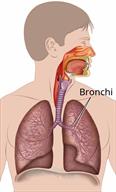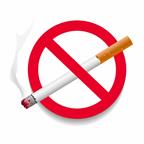Asthma Attack

Asthma attack, also called asthma flare or acute bronchospasm, is the sudden narrowing and tightening of the lower airways (bronchi) in the lungs, that can make it hard to breathe. The narrowing is caused by inflammation and tightening of the smooth muscle that wraps around the lower airways in the lungs.
Asthma attacks may cause coughing, high-pitched whistling sounds when you breathe, most often when you breathe out (wheezing), trouble breathing (shortness of breath), and chest pain. The airways may produce extra mucus caused by the inflammation and irritation. During an asthma attack, it can be difficult to breathe. It is important to get treatment right away. Asthma attacks can range from minor to life-threatening.
What are the causes?
Possible causes or triggers of this condition include:
Household allergens like dust, pet dander, and cockroaches.
Mold and pollen from trees or grass.
Air pollutants such as household cleaners, aerosol sprays, strong odors, and smoke of any kind.
Weather changes and cold air.
Stress or strong emotions such as crying or laughing hard.
Exercise or activity that requires a lot of energy.
- Certain medicines or medical conditions such as:
Aspirin or beta-blockers.
Infections or inflammatory conditions, such as a flu (influenza), a cold, pneumonia, or inflammation of the nasal membranes (rhinitis).
Gastroesophageal reflux disease (GERD). GERD is a condition in which stomach acid backs up into your esophagus and spills into your trachea (windpipe), which can irritate your airways.
What are the signs or symptoms?
Symptoms of this condition include:
Wheezing.
Excessive coughing. This may only happen at night.
Chest tightness or pain.
Shortness of breath.
Difficulty talking in complete sentences.
Feeling like you cannot get enough air, no matter how hard you breathe (air hunger).
How is this diagnosed?
This condition may be diagnosed based on:
How is this treated?
Treatment for this condition depends on the severity and cause of your asthma attack.
- For mild attacks, you may receive medicines through a hand-held inhaler (metered dose inhaler or MDI) or through a device that turns liquid medicine into a mist (nebulizer). These medicines include:
For moderate or severe attacks, you may be treated with steroid medicines by mouth or through an IV injection at the hospital.
For severe attacks, you may need oxygen therapy or a breathing machine (ventilator).
If your asthma attack was caused by an infection from bacteria, you will be given antibiotic medicines.
Follow these instructions at home:
Medicines
-
Take over-the-counter and prescription medicines only as told by your health care provider.
-
If you were prescribed an antibiotic medicine, take it as told by your health care provider. Do not stop using the antibiotic even if you start to feel better.
-
Tell your doctor if you are pregnant or may be pregnant to make sure your asthma medicine is safe to use during pregnancy.
Avoiding triggers

-
Keep track of things that trigger your asthma attacks. Avoid exposure to these triggers.
-
Do not use any products that contain nicotine or tobacco. These products include cigarettes, chewing tobacco, and vaping devices, such as e-cigarettes. If you need help quitting, ask your health care provider.
-
When there is a lot of pollen, air pollution, or humidity, keep windows closed and use an air conditioner or go to places with air conditioning.
Asthma action plan
- Work with your health care provider to make a written plan for managing and treating your asthma attacks (asthma action plan). This plan should include:
A list of your asthma triggers and how to avoid them.
A list of symptoms that you may have during an asthma attack.
Information about which medicine to take, when to take the medicine, and how much of the medicine to take.
Information to help you understand your peak flow measurements.
Daily actions that you can take to control your asthma symptoms.
Contact information for your health care providers.
-
If you have an asthma attack, act quickly. Follow the emergency steps on your written asthma action plan. This may prevent you from needing to go to the hospital.
-
Talk to a family member or close friend about your asthma action plan and who to contact in case you need help.
General instructions
-
Avoid excessive exercise or activity until your asthma attack goes away.
-
Stay up to date on all your vaccines, such as flu and pneumonia vaccines.
-
Keep all follow-up visits. This is important.
Contact a health care provider if:
-
You have followed your action plan for 1 hour and your peak flow reading is still at 50–79% of your personal best. This is in the yellow zone, which means "caution."
-
You need to use your quick reliever medicine more frequently than normal.
-
Your medicines are causing side effects, such as rash, itching, swelling, or trouble breathing.
-
Your symptoms do not improve after taking medicine.
-
You have a fever.
-
Your peak flow reading is less than 50% of your personal best. This is in the red zone, which means "danger."
-
You develop chest pain or discomfort.
-
Your medicines no longer seem to be helping.
-
You are coughing up bloody mucus.
-
You have a fever and your symptoms suddenly get worse.
-
You have trouble swallowing.
-
You feel very tired, and breathing becomes tiring.
These symptoms may be an emergency. Get help right away. Call 911.
Summary
-
Asthma attacks are caused by narrowing or tightness in air passages, which causes shortness of breath, coughing, and wheezing.
-
Many things can trigger an asthma attack, such as allergens, weather changes, exercise, strong odors, and smoke of any kind.
-
If you have an asthma attack, act quickly. Follow the emergency steps on your written asthma action plan.
-
Get help right away if you have severe trouble breathing, chest pain, or fever, or if your home medicines are no longer helping with your symptoms.
This information is not intended to replace advice given to you by your health care provider. Make sure you discuss any questions you have with your health care provider.

